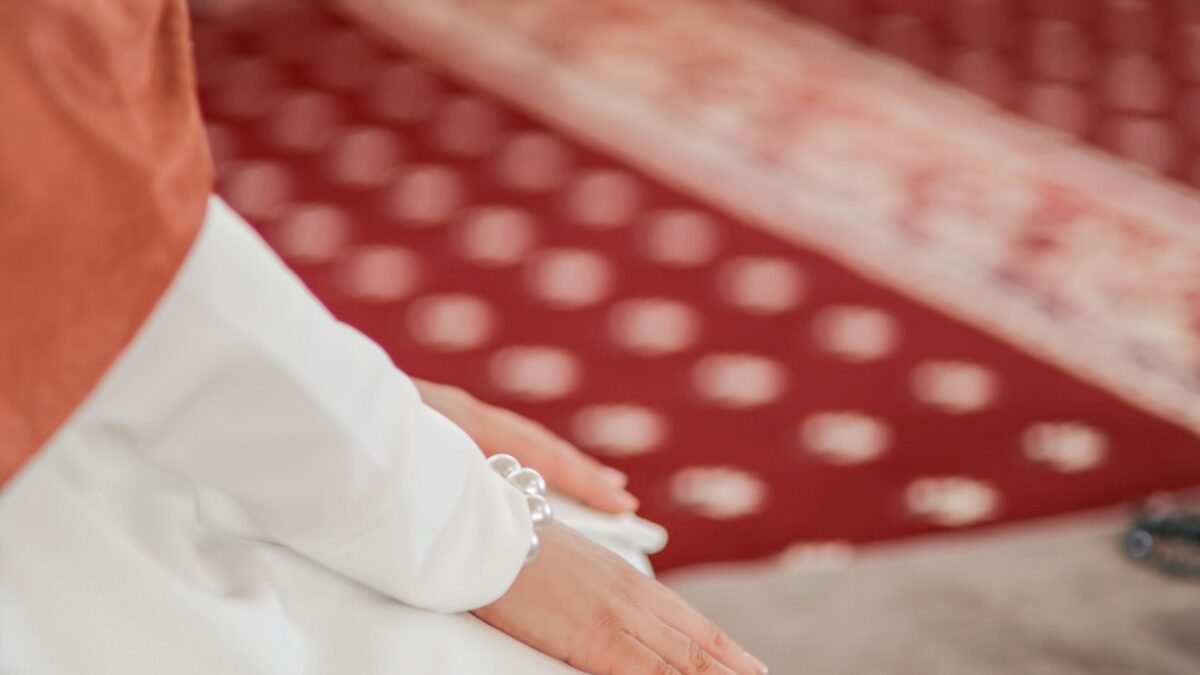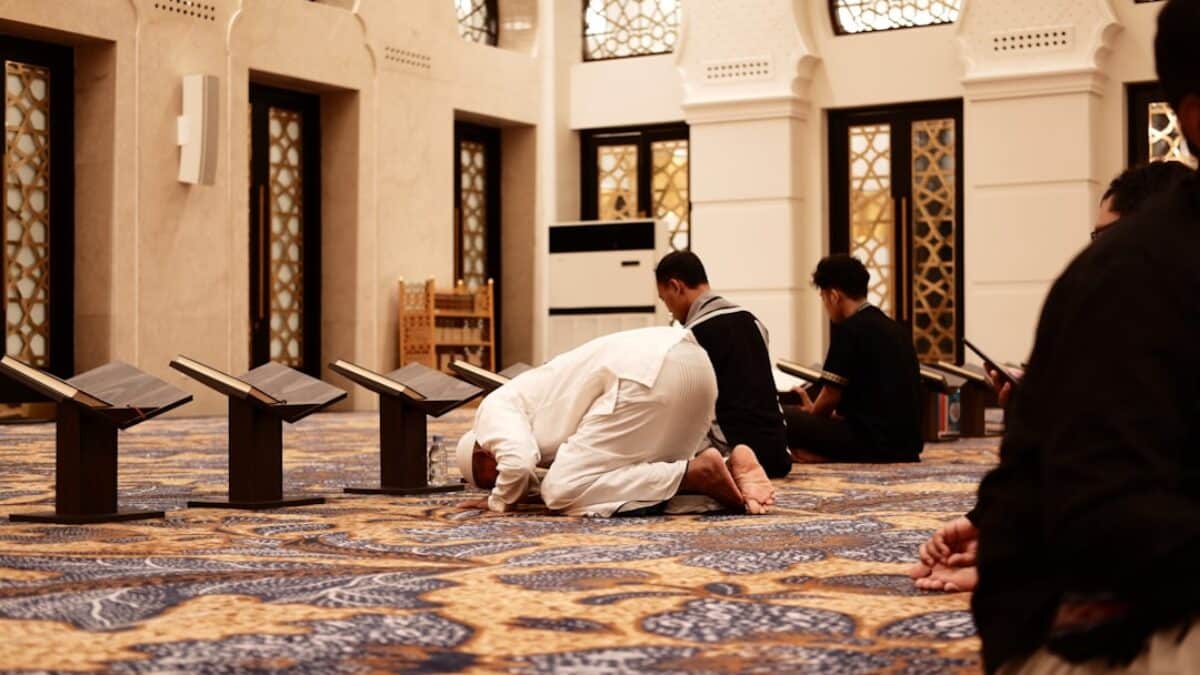Prayer in Islam, known as Salah, is the second pillar of the faith and the cornerstone of a Muslim’s daily spiritual routine. Performed five times each day, Salah is both an obligation and a profound opportunity to stand before Allah in humility, gratitude, and submission. Yet the outward motions—standing, bowing, prostrating—are only part of the picture. Beneath every synchronized movement lies a rich fabric of etiquette, derived from the Qur’an and the Sunnah of the Prophet Muhammad ﷺ, which ensures that each prayer is spiritually uplifting and acceptable to Allah. This article explores the essential steps for a proper Salah, unpacking the manners, conditions, and recommended acts that transform ritual into a living conversation with the Divine.
Understanding Islamic Prayer Etiquette
Islamic prayer etiquette, or Adab al-Salah, is a comprehensive set of guidelines governing both the outward and inward dimensions of worship. Outward etiquette covers purity of body, dress, and place; inward etiquette encompasses sincerity, presence of heart, and mindfulness of Allah. Together, they ensure that Salah achieves its primary purpose: remembrance of Allah.
The Spiritual Significance of Etiquette
Every etiquette in Islam has a dual function: it purifies the soul and regulates society. When you enter prayer with clean clothes, a focused mind, and polite conduct toward fellow worshippers, you simultaneously refine your inner character and foster communal harmony. The Prophet ﷺ said, “Indeed, prayer prevents immorality and wrongdoing” (Qur’an 29:45). Proper etiquette magnifies this preventive power by aligning intention, speech, and action with divine guidance.
Sources of Etiquette: Qur’an, Sunnah, and Scholarly Consensus
- Qur’an: Commands for ablution (4:43, 5:6), the call to prayer (62:9), and the etiquette of congregational prayer (24:36-37).
- Sunnah: Detailed descriptions of how the Prophet ﷺ performed ablution, walked to the masjid, straightened rows, and responded to distractions.
- Scholarly Consensus (Ijma‘): Agreement on essentials such as facing the Qiblah and covering the ‘awrah (minimum body parts to be concealed).
Key Components of a Proper Salah
To pray correctly, one must satisfy a sequence of conditions, pillars, and recommended acts. Think of them as concentric circles: conditions must be met for the prayer to be valid, pillars are indispensable actions within the prayer itself, and recommended acts enhance reward and spiritual depth.
Pre-Prayer Conditions (Shurut)
Purity of Body (Taharah):
Perform wudu’ (minor ablution) for minor impurities; ghusl (ritual bath) for major impurities. Ensure no najasah (filth) remains on clothes, body, or place of prayer. Purity of Garments and Place:
Garments must cover the ‘awrah (for men: navel to knees; for women: entire body except face and hands according to many schools). Choose a clean spot; if outside, verify the ground is free from urine, feces, or blood. Correct Timing (Waqt):
Fajr: begins at true dawn and ends at sunrise. Dhuhr: begins after the sun passes its zenith and ends when an object’s shadow equals its length. ‘Asr: begins at the end of Dhuhr’s time and ends when the sun yellows. Maghrib: begins at sunset and ends when twilight disappears. ‘Isha’: begins after twilight and ends at midnight (or dawn according to some). Face the Qiblah: The Ka‘bah in Makkah. Intention (Niyyah): A firm resolve in the heart aligning the upcoming prayer with a specific obligation or supererogatory act.
Internal Preparation
- Presence of Heart (Khushu‘): Focus on the words of Qur’an and dhikr; banish worldly thoughts.
- Sincerity (Ikhlas): Perform the prayer solely for Allah’s pleasure, not to impress others.
- Promptness (Mubadaratan): Respond quickly to the adhan, embodying eagerness to meet Allah.
Recommended Pre-Salah Sunnah Acts
| Sunnah Act | Description | Spiritual Benefit |
|---|---|---|
| Adhan & Iqamah | Call to prayer at prescribed times | Announces Allah’s greatness; gathers community |
| Siwak | Brushing teeth with miswak | Physical cleanliness; pleases Allah with pleasant breath |
| Walking to Masjid Calmly | Right foot first, measured steps | Humility; reduces distractions |
| Tahiyyat al-Masjid | Two rak‘ahs upon entering | Greets the house of Allah |
Pillars (Arkan) of Salah
- Takbirat al-Ihram: Saying “Allahu Akbar” while raising hands to shoulder or ear level, signaling the prayer’s start.
- Standing (Qiyam): Obligatory for those physically able; feet apart, eyes focused on the place of prostration.
- Recitation of Al-Fatihah: The greatest chapter of the Qur’an; must be recited in every rak‘ah.
- Bowing (Ruku‘): Bend until back is level, grasp knees, glorify Allah (Subhana Rabbiy al-‘Adhim).
- Prostration (Sujud): Seven bones touch the ground: forehead, nose, two hands, two knees, two feet.
- Sitting for Tashahhud: Index finger points during testimony of faith; supplications recited.
- Salat al-Ibrahimiyyah: Blessings upon the Prophet and his family.
- Taslim: Peaceful greetings to right and left: “As-salamu ‘alaykum wa rahmatullah.”
Recommended Acts (Mustahabb)
- Reciting additional verses after Al-Fatihah.
- Maintaining quiet between positions with prescribed supplications.
- Reciting longer surahs in Fajr, shorter in ‘Asr and Maghrib.
- Performing Sunnah rak‘ahs before and after the obligatory prayer.
Benefits and Importance
Proper etiquette in Salah is not ceremonial formality; it yields tangible spiritual, psychological, and communal benefits.
Spiritual Benefits
- Proximity to Allah: Allah says, “And establish prayer for My remembrance” (20:14). Observing etiquette keeps the heart anchored in divine presence.
- Sins Erased: The Prophet ﷺ likened the five daily prayers to bathing in a river five times a day—each dip washes away new grime.
- Illumination of the Face: Regular, mindful prayer leaves a noor (light) on the believer’s face recognizable even to non-Muslims.
Psychological Benefits
- Stress Reduction: Rhythmic physical movement combined with Qur’anic recitation lowers cortisol levels.
- Discipline: Fixed prayer times train the mind to prioritize spiritual obligations over fleeting desires.
- Self-Esteem: Knowledge that one is fulfilling a divine command boosts confidence and moral integrity.
Social Benefits
- Community Cohesion: Praying in congregation cultivates unity across ethnic and economic lines.
- Mutual Accountability: Shared spaces encourage modesty, punctuality, and mutual respect.
- Inter-generational Bonding: Children learn etiquette by emulating elders in the masjid.
Practical Applications
Knowing the theory is only half the journey; implementing etiquette in real life requires planning and consistency. Below are scenarios and solutions.
Scenario 1: Workplace Prayer
Challenge: Limited time, shared offices, potential distractions.
Solution:
Keep a compact prayer mat and wudu’ bottle in your desk drawer. Use a prayer time app to receive discreet notifications. Reserve a quiet room in advance; post a polite sign: “In prayer—will return in 10 minutes.” Perform shortened Dhuhr if needed (qasr) for travelers.
Scenario 2: Traveling by Air
Challenge: No ablution facilities, direction of Qiblah unknown.
Solution:
Perform wudu’ before boarding; carry unscented wipes as a backup. Use a Qiblah compass app or seat-back screen map. Combine Dhuhr and ‘Asr during long flights if conditions meet the criteria for jam‘ (combining). Perform prayer seated if the seat-belt sign remains illuminated, making gestures for bowing and prostration.
Scenario 3: Leading Family Prayer at Home
Challenge: Young children causing distractions.
Solution:
Create a dedicated prayer corner with a child-friendly rug and picture of the Ka‘bah. Narrate stories of the Prophet’s prayer etiquette during bedtime to build anticipation. Allow children to stand beside you and mimic movements; reward their efforts with gentle praise. Schedule family prayer just before bedtime to reinforce routine.
Scenario 4: Women Praying in Congregation
Challenge: Balancing household duties with punctual prayer.
Solution:
Designate one room as a musalla; adorn it with soft lighting and fragrance. Coordinate with neighbors to form a rotating women’s congregation on weekends. Encourage daughters to give the iqamah, reinforcing confidence and participation. Use the time after prayer for collective Qur’an study and dhikr.
Frequently Asked Questions
What is the minimum clothing requirement for a valid prayer?
The ‘awrah must be fully covered. For men, this is from the navel to the knees, though covering the shoulders is mustahabb. For women, the entire body except the face and hands (and according to some opinions, feet) must be concealed with opaque fabric. Clothes must also be free of najasah unless the impurity is excusable in size or nature.
Can I pray on an airplane seat if there is severe turbulence?
Yes. When standing, facing the Qiblah, or performing full prostration is impossible, you may pray seated, gesturing with your head for the bowing and prostration movements. Make up the prayer later if you reach your destination within the prayer time window.
How do I regain focus when my mind wanders
























Post Comment